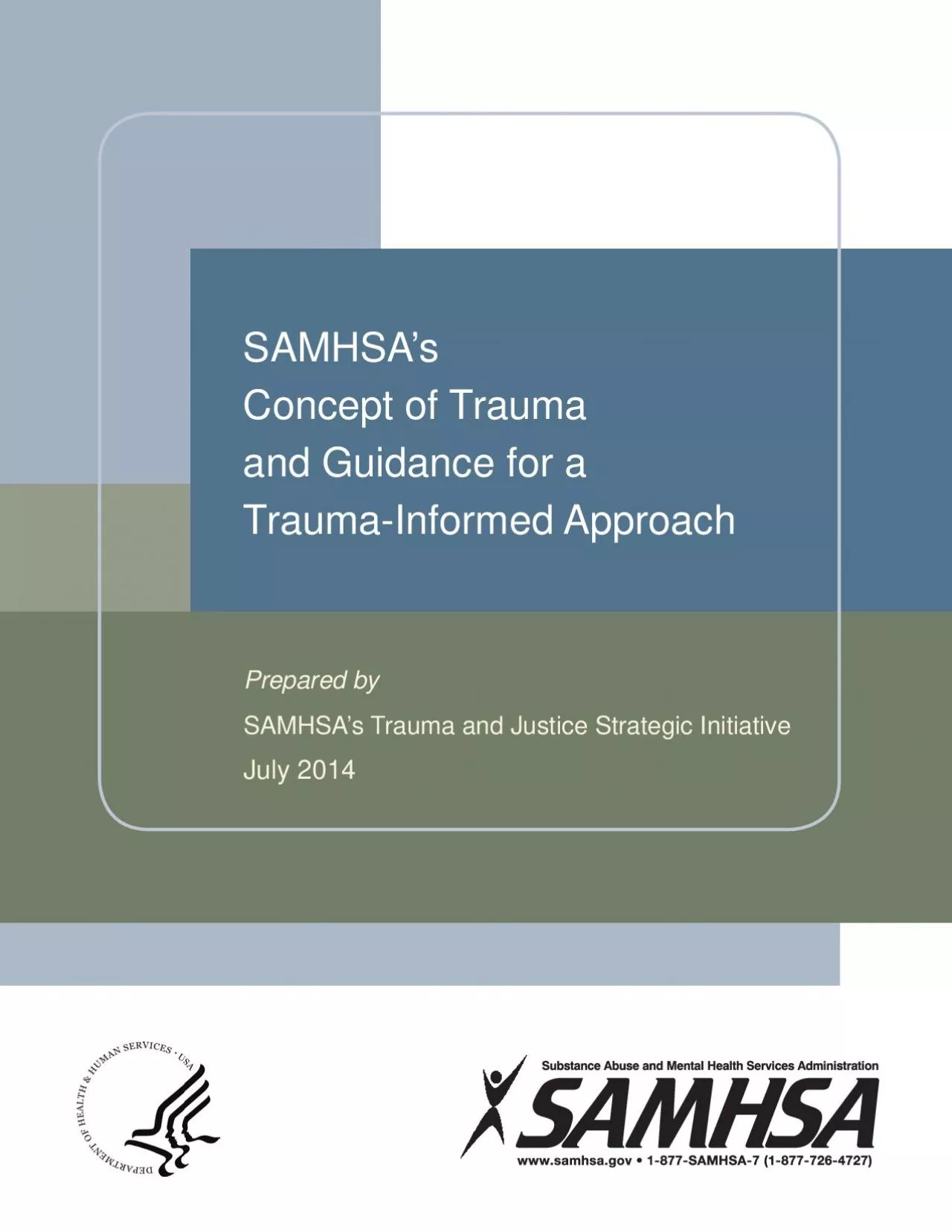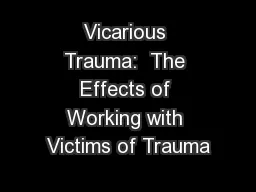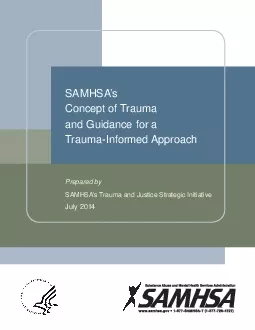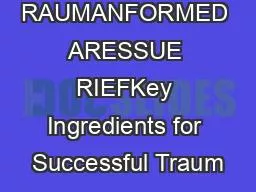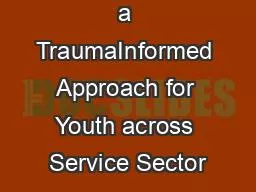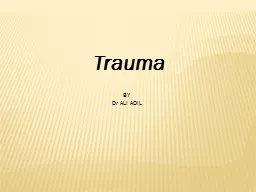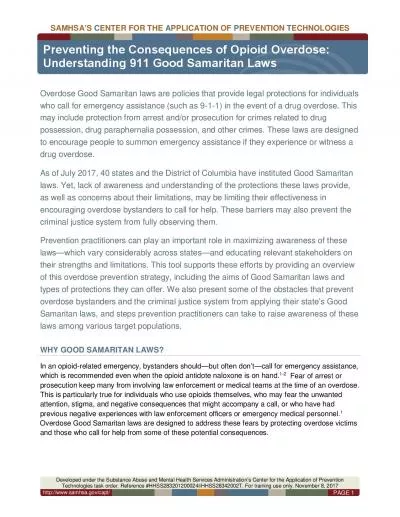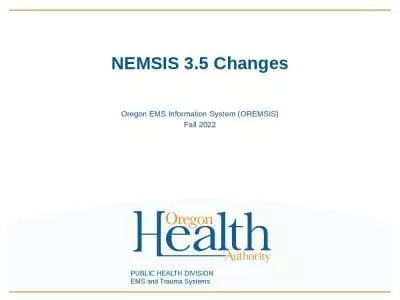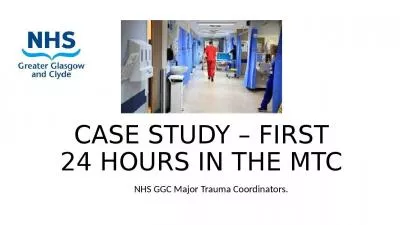PDF-SAMHSA146s Concept of Trauma and Guidance for a TraumaInformed A
Author : danya | Published Date : 2022-08-21
SAMHSA146s Trauma and Justice Strategic Initiative Substance Abuse and Mental Health Services AdministrationOfx00660069ce of Policy Planning and Innovation This
Presentation Embed Code
Download Presentation
Download Presentation The PPT/PDF document "SAMHSA146s Concept of Trauma and Guidan..." is the property of its rightful owner. Permission is granted to download and print the materials on this website for personal, non-commercial use only, and to display it on your personal computer provided you do not modify the materials and that you retain all copyright notices contained in the materials. By downloading content from our website, you accept the terms of this agreement.
SAMHSA146s Concept of Trauma and Guidance for a TraumaInformed A: Transcript
Download Rules Of Document
"SAMHSA146s Concept of Trauma and Guidance for a TraumaInformed A"The content belongs to its owner. You may download and print it for personal use, without modification, and keep all copyright notices. By downloading, you agree to these terms.
Related Documents

